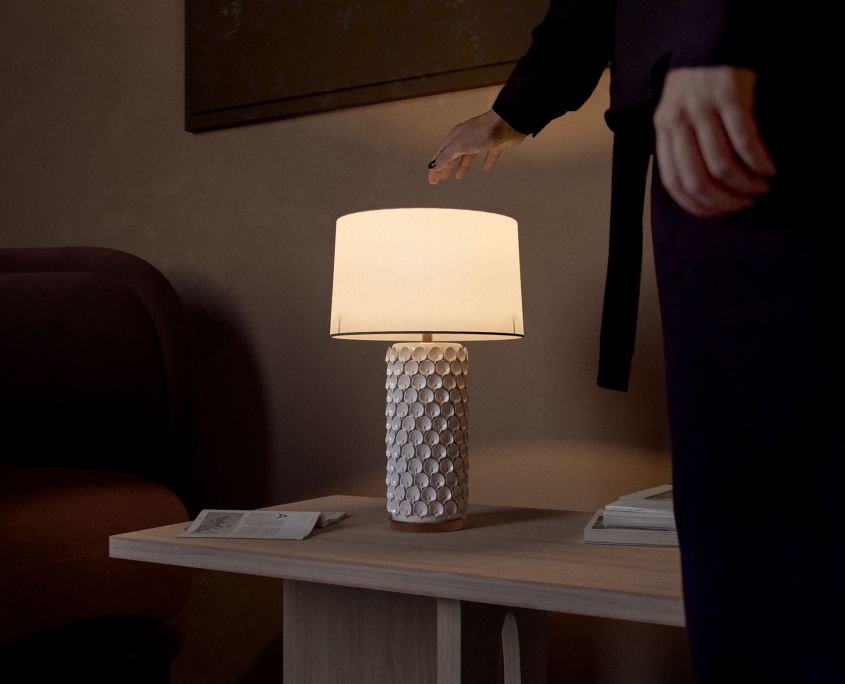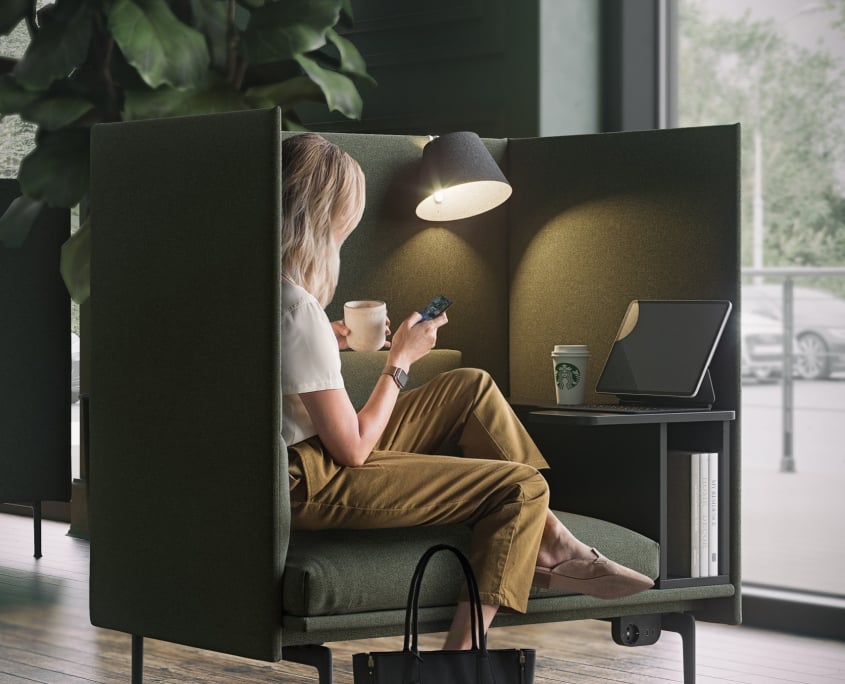People in 3D Renderings:
Top 4 Solutions for Lifestyle Product Images
People in 3D renderings bring a sense of scale and realism, helping viewers better visualize the space and context. Their inclusion adds life and emotional depth, making the scene more engaging and relatable. However, choosing the correct CGI figures is vital to achieving this effect.
Our 3D rendering company focuses on creating exciting and realistic visual effects for our clients. We constantly monitor new technologies to improve the quality of our visualizations. Here, we share our experience adding people to CGI, helping you find the best option for your project.
#1. 2D People
This technique often involves 2D clippings, where human figures from photographs are scaled and integrated into furniture scenes using Photoshop. These clippings can look very realistic in close-up shots, adding depth to a furniture display. However, they require more flexibility because their poses and angles cannot be adjusted. On the other hand, adding fully 3D people offers more versatility but is time-consuming. It requires careful adjustment of lighting and shadows so that they blend seamlessly with the furniture, creating a natural, cohesive look.
#2. 3D Modeled People
People in 3D renderings, created as 3D models, offer more flexibility than 2D cutouts. Their poses can be easily adjusted to suit the furniture arrangement. They also require less time for lighting adjustments, making them more efficient for seamless integration. However, 3D models of people can appear slightly unnatural in close-up views, so they are best used in distant shots or with a slight blur to maintain realism.
For animated furniture presentations, people in 3D renderings are ideal, as they enhance movement and interaction.
#3. AI-Enhanced 3D People
Artificial intelligence advances are transforming the incorporation of people in 3D renderings for furniture design. Tools such as Stable Diffusion enhance the realism of 3D models, allowing them to blend seamlessly with furniture layouts. AI can fine-tune lighting, change facial expressions clothing, and even correct the age or ethnicity of figures, providing more accurate and personalized visualizations. This flexibility allows 3D artists to create more attractive and contextually relevant furniture visualizations. AI models make furniture products look more realistic and immersive, even in close-ups, increasing overall visual appeal.
#4. Renders without People
Applying the “less is more” philosophy can be efficient in certain situations when no people are depicted in 3D renderings. This approach allows you to focus the presentation more on the design itself or individual elements without being distracted by human figures. By eliminating people from the visualization, viewers can concentrate on the design details, appreciating the skill and creativity that went into the project.
The absence of figures also provides a view of essential aspects such as materials, textures, and spatial dynamics. This clarity allows potential buyers or clients to fully understand the quality and nuances of the furniture and its surroundings. Moreover, in the absence of people, the space can appear more voluminous, emphasizing the smoothness and functionality of the design. This technique is handy for showcasing minimalist or modern design, where simplicity and elegance take center stage, creating a serene and inviting atmosphere.
People in 3D renderings enhance the furniture product placement by adding a sense of life and emotional engagement, making it more relatable and appealing. However, there are times when the presence of people can distract from the product itself, overshadowing the design details and quality. Designers must evaluate all options and select the best approach to effectively communicate their furniture pieces’ moods and messages.
If you’re looking for a partner to help bring your furniture vision to life, contact us for exceptional 3D rendering services!







Leave a Reply
Want to join the discussion?Feel free to contribute!